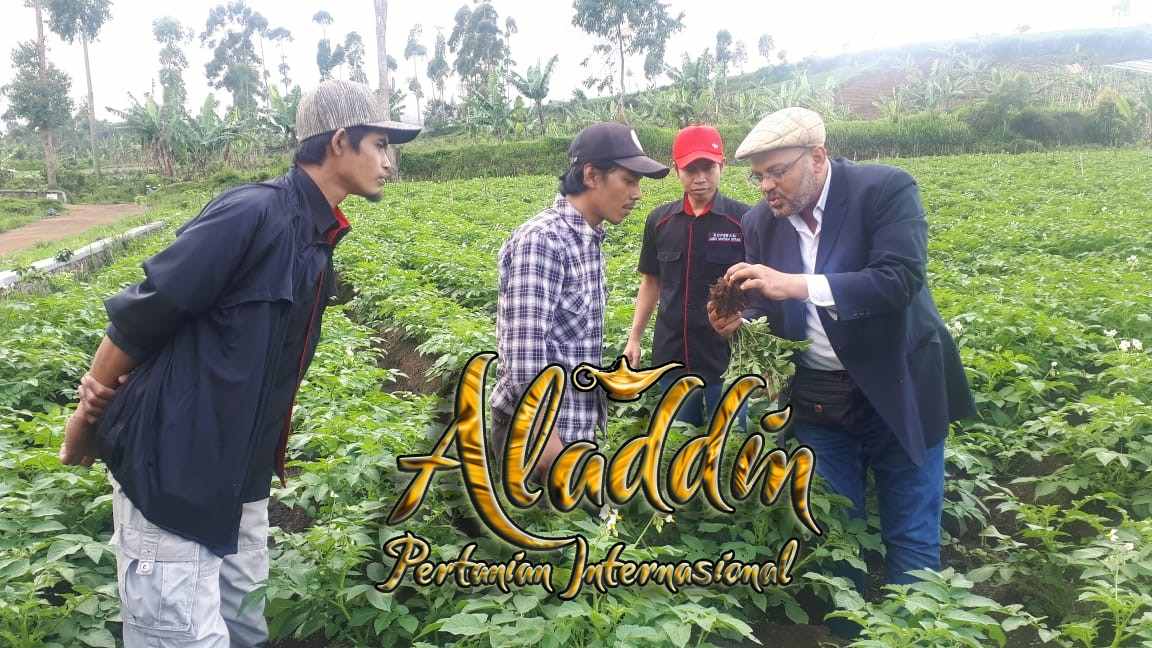Technical Guide for Processing Potato Cultivation
Optimizing Quality, Productivity, and Value Chain Resilience in the Indonesian Highlands
1. Strategic Planning and Varietal Selection
The Indonesian potato sector faces a challenge: meeting high consumer demand for processed products amidst stagnant domestic production. Transitioning to processing cultivation requires rigorous focus on quality assurance and cost efficiency to meet industrial standards (high SG, low RS).
Key Imperatives
- Market Dynamics: Overcome the structural supply deficit and declining competitiveness against rivals (China, India, Russia). Competitive advantage is fundamentally determined by productivity growth.
- Quality Focus: Competitive advantage hinges on maximizing marketable, compliant tonnes per hectare, meeting rigid specifications for high Specific Gravity (SG) and low Reducing Sugars (RS).
- Constraint Mitigation: Address chronic poor seed quality, endemic diseases (Bacterial Wilt), risks associated with drought, and the pervasive issue of soil degradation.
Strategic Do's
Strategic Don'ts
2. Agro-Climatic Optimization
Cultivation must occur exclusively in the highlands to meet the temperate crop's temperature needs, ensuring optimal tuber development and quality. This is a mandatory quality control requirement.
Ideal Temperature Requirements
- Vegetative Growth: Optimal at approximately 24°C.
- Tuber Development (Crucial): Favored at 20°C.
- Mandatory Zone: Potatoes must be grown between 800 and 1,800 meters above sea level (masl). Cultivation below 800 masl compromises dry matter content.
Indonesian Processing Potato Cultivation Calendar
| Season | Altitude (masl) | Planting | Harvest | Primary Risk |
|---|---|---|---|---|
| Dry Season Crop (Preferred) | 800 – 1,800 | April - May | July - August | Drought/Irrigation |
| Rainy Season Crop (High Risk) | 800 – 1,800 | September - October | Dec - Jan | Bacterial Wilt/Late Blight |
Do's (Climate)
Don'ts (Climate)
3. Defining Processing Quality Targets
Processing quality relies on two non-negotiable physiological characteristics: High Specific Gravity (DM) and Low Reducing Sugars (RS). These control cost, texture, and health profile.
Specific Gravity (SG)
SG is the key metric. High SG means high Dry Matter (DM), which leads to lower oil uptake during frying (cost savings) and a better texture.
Industry Standard: Minimum 1.07 (corresponds to DM $\ge 16.7\%$).
Reducing Sugars (RS)
The content of Reducing Sugars (glucose and fructose) is critical. High RS causes undesirable browning and generates acrylamide (a suspected human carcinogen) during frying (Maillard reaction).
Industry Standard: Maximum 0.25% Post-Storage.
Mitigate Cold-Induced Sweetening (CIS) by avoiding storage below 9°C, as this activates the degradation of starch to sugars.
Agronomic Control: Key Levers
- Nitrogen (N) Management: Excessive or late N application stimulates vigorous haulm growth, delaying tuber bulking and reducing DM. Limit split application to 3-5 weeks after crop emergence.
- Phosphorus (P) & Potassium (K): P enhances early development and DM. Crucially, use Potassium Sulfate ($\text{K}_2\text{SO}_4$) over Potassium Chloride (KCl) for consistently higher DM.
- Haulm Killing: Necessary to stop tuber sizing and maximize DM transfer. Perform 2-3 weeks before harvest to ensure proper skin set (curing).
Do's (Quality)
Don'ts (Quality)
4 & 5. Seed Compliance, Varietal Selection, and Integrated Disease Management (IDM)
High-quality seed is the single greatest factor for competitiveness. Managing Bacterial Wilt and Late Blight requires a non-chemical, cultural-practice-first approach.
Seed Sourcing & Compliance
The lack of consistent, high-quality seed is the greatest limiting factor. Poor seed quality is the root cause of the most destructive disease risks (Bacterial Wilt).
- Strategic Sourcing: Purchase directly from Balitsa (Govt. Research Institute) or highly reputable, registered private breeders.
- Compliance: Demand and verify the official government certification tag and G-class documentation detailing the generation.
- Inspection: Conduct a meticulous inspection of seed tubers upon delivery, checking for visual defects or vascular ring discoloration.
Recommended Processing Varieties
Selection must prioritize high SG (1.07) performance under Indonesian conditions for industrial suitability.
- Atlantik: Widely recognized, high SG, suitable for chips and French fries.
- Medians: Demonstrates compliance with high SG standards.
- Promising Clones: AR-08 and Clone 16 are high-yielding candidates that have shown compliance with the high SG benchmark.
Bacterial Wilt (BW) Control
BW is amplified by high rainfall and humidity. Since chemical control is generally ineffective, reliance is entirely on cultural practices.
- Rotation: Minimum two years rotation with non-host, non-solanaceous crops (e.g., corn or sweet potato).
- Water Management: The most critical step. Maintain rapid, free water flow and prevent water accumulation, as the pathogen spreads via surface water.
- Sanitation: Immediately isolate/destroy wilting plants after definitive diagnosis (vascular flow test, starting at 35 DAP).
